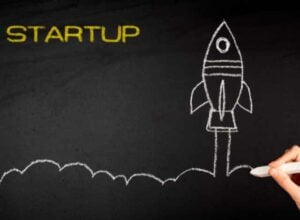In today’s rapidly evolving business landscape, the significance of workplace diversity and inclusion cannot be overstated. Companies are increasingly recognizing that a diverse workforce not only enhances creativity and innovation but also drives better decision-making and improves overall performance. A well-crafted proposal for enhancing diversity and inclusion within an organization serves as a roadmap for fostering an inclusive culture that values differences and promotes equity.
This article will explore the essential components of a successful diversity and inclusion proposal, providing actionable insights and strategies for businesses looking to make meaningful changes. A comprehensive diversity and inclusion proposal should begin with a clear understanding of the current state of the organization. This involves assessing existing policies, practices, and cultural dynamics that either support or hinder diversity efforts.
By identifying gaps and opportunities, businesses can create targeted initiatives that resonate with their workforce and align with their organizational goals. The following sections will delve into the importance of diversity and inclusion, the research necessary for identifying areas for improvement, and the development of actionable strategies to implement change.
Understanding the Importance of Diversity and Inclusion in the Workplace
Diversity and inclusion are not merely buzzwords; they are critical components of a thriving workplace. A diverse workforce brings together individuals from various backgrounds, experiences, and perspectives, which can lead to enhanced creativity and innovation. Research has shown that companies with diverse teams are more likely to outperform their competitors in terms of profitability and productivity.
For instance, a McKinsey report found that organizations in the top quartile for gender diversity on executive teams were 21% more likely to experience above-average profitability compared to those in the bottom quartile. Moreover, fostering an inclusive environment is essential for employee engagement and retention. When employees feel valued and included, they are more likely to contribute their best work and remain loyal to the organization.
This is particularly important in today’s competitive job market, where top talent seeks workplaces that prioritize diversity and inclusivity. Companies like Salesforce have made significant strides in this area by implementing comprehensive diversity initiatives, resulting in increased employee satisfaction and a stronger employer brand.
Researching and Identifying Areas for Improvement
Before embarking on a diversity and inclusion initiative, it is crucial for organizations to conduct thorough research to identify specific areas for improvement. This process begins with gathering data on the current demographic makeup of the workforce, including gender, race, ethnicity, age, sexual orientation, and disability status. Surveys and focus groups can provide valuable insights into employee perceptions of diversity and inclusion within the organization.
Additionally, organizations should analyze their recruitment, hiring, promotion, and retention practices to uncover any biases or barriers that may exist. For example, a company may discover that its hiring process disproportionately favors candidates from certain backgrounds or that employees from underrepresented groups are less likely to be promoted. By pinpointing these areas of concern, businesses can develop targeted strategies to address them effectively.
Developing Goals and Objectives for Diversity and Inclusion
Once areas for improvement have been identified, the next step is to establish clear goals and objectives for the diversity and inclusion proposal. These goals should be specific, measurable, achievable, relevant, and time-bound (SMART). For instance, a company might set a goal to increase the representation of women in leadership positions by 25% over the next three years.
This goal not only provides a clear target but also aligns with broader organizational objectives related to talent development and retention. In addition to quantitative goals, it is essential to establish qualitative objectives that focus on creating an inclusive culture. This could involve fostering open communication channels where employees feel comfortable sharing their experiences or implementing training programs that promote cultural competency among staff.
By balancing both quantitative and qualitative objectives, organizations can create a comprehensive approach to diversity and inclusion that addresses both representation and workplace culture.
Creating Strategies and Initiatives for Implementation
With clear goals in place, organizations can begin developing strategies and initiatives to implement their diversity and inclusion proposal effectively. One effective approach is to establish employee resource groups (ERGs) that provide support and networking opportunities for underrepresented employees. These groups can serve as a platform for sharing experiences, advocating for change, and fostering a sense of belonging within the organization.
Another strategy is to incorporate diversity training into onboarding processes and ongoing professional development programs. Training sessions can cover topics such as unconscious bias, cultural awareness, and inclusive leadership practices. Companies like Google have successfully implemented such training programs, resulting in increased awareness of diversity issues among employees and improved workplace dynamics.
Additionally, organizations should consider revising their recruitment strategies to attract a more diverse pool of candidates. This may involve partnering with organizations that focus on underrepresented groups or utilizing diverse hiring panels during the interview process. By actively seeking out diverse talent, companies can create a more inclusive workforce that reflects the communities they serve.
Addressing Potential Challenges and Obstacles
Implementing a diversity and inclusion proposal is not without its challenges. Organizations may encounter resistance from employees who are skeptical about the need for change or who feel threatened by new initiatives. To address these concerns, it is essential to communicate the benefits of diversity and inclusion clearly.
Leadership should articulate how these efforts align with the company’s values and mission while emphasizing the positive impact on overall performance. Another potential obstacle is the lack of resources or budget constraints that may hinder the implementation of diversity initiatives. To overcome this challenge, organizations can seek external funding or partnerships with community organizations that share similar goals.
Additionally, leveraging existing resources—such as employee volunteers or internal champions—can help drive initiatives forward without incurring significant costs.
Evaluating and Measuring the Success of the Proposal
To ensure the effectiveness of a diversity and inclusion proposal, organizations must establish metrics for evaluating progress. This involves regularly collecting data on key performance indicators (KPIs) such as employee demographics, retention rates among diverse groups, participation in training programs, and employee satisfaction scores related to inclusivity. By analyzing this data over time, businesses can assess whether their initiatives are yielding positive results.
Furthermore, it is crucial to solicit feedback from employees regarding their experiences with diversity initiatives. Surveys or focus groups can provide valuable insights into what is working well and what areas may need further attention. By fostering a culture of continuous improvement, organizations can adapt their strategies as needed to ensure ongoing progress toward their diversity and inclusion goals.
Conclusion and Next Steps
In conclusion, developing a successful workplace diversity and inclusion proposal requires careful planning, research, and commitment from all levels of the organization. By understanding the importance of diversity and inclusion, identifying areas for improvement, setting clear goals, creating actionable strategies, addressing challenges, and measuring success, businesses can foster an inclusive culture that benefits everyone involved. As companies move forward with their proposals, it is essential to maintain open lines of communication with employees throughout the process.
Engaging staff in discussions about diversity initiatives not only fosters buy-in but also empowers individuals to take ownership of their contributions toward creating an inclusive workplace. The journey toward enhanced diversity and inclusion is ongoing; however, with dedication and strategic planning, organizations can make significant strides toward building a more equitable future for all employees.























